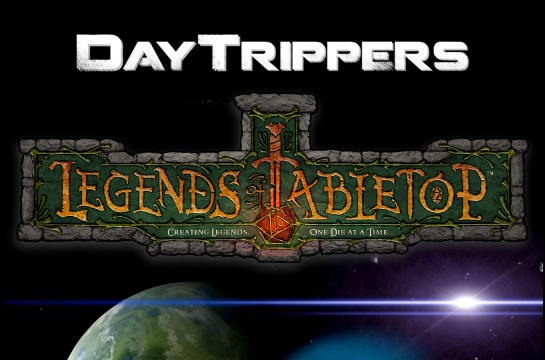
Oct 21, 2015 | Words in a Row
On October 21st, DayTrippers designer/author Tod Foley (that’s me!) was the guest on the Legends of Tabletop podcast. The conversation included some of the “hybrid” techniques used in the game, including the YES/NO/AND/BUT action resolution system, progressive character generation, and the stance of the DayTrippers GM midway between trad and narrativism. Also discussed: the game’s influences, from Star Trek and Car Wars and Itras By to Kung Fu and Buckaroo Banzai and Heavy Metal magazine.
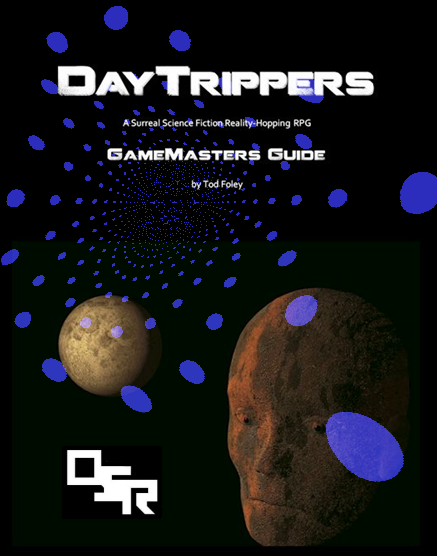
Oct 8, 2015 | Words in a Row
I was asked to explain how DayTrippers – with its collaborative interpretive action resolution system and narrative arc model – can be considered “OSR”. Certainly those things don’t sound very “old-school”. Indeed, the action resolution system in DayTrippers is based on a Narrativist technique, and the whole idea of working within a narrative arc is more Modern than Trad. At first glance, these things might make DayTrippers seem decidedly “new-school”. That’s especially true when we consider the Core Rules alone. But the DayTrippers GameMasters Guide is a different sort of animal – a blend of traditional and modern techniques – producing high-prep, high-bleed adventures, designed to be run by Auteur GMs. Within the pages of this book, DayTrippers meets the OSR. Let’s see how it stacks up against a classic definition of the term.
Matthew Finch, author-designer of the 0e retro-clone “Swords and Wizardry” wrote what is perhaps the definitive primer on “Old School” gaming. His “Quick Primer for Old School Gaming” is available for free on Lulu.com. In this book, Finch lays out the four “Zen Moments” which for him define the old-school experience, and goes on to illustrate each with examples. I decided to use Finch’s criteria as an OSR filter for analyzing the design and flow of a DayTrippers game. Grab a copy of Finch’s piece at Lulu and read along:
First Zen Moment: Rulings, Not Rules
OSR games tend to rely on GM rulings, rather than cut-and-dry rules or situation-specific rolls. Like Finch says, that’s why there are so few numbers on the character sheet, and so few specified abilities. A few Stats and a few Skills – loosely interpreted and generously applied – are all you need. Thinking outside of the box is the norm. No matter what weird idea the Players have, there is a simple mechanic for the GM to grab and extrapolate a ruling from. For players, this means that problems will tend to be solved creatively, using observation, reasoning and experimentation. No two traps (or solutions) are alike.
This is the approach of DayTrippers as well: The PC Sheet has very few numbers on it, and they are all very broadly interpreted. The “bipartite narrative resolution system” (YES AND, YES BUT, etc) not only forces each action roll to be interpreted in terms of the fiction, but a positive result on a roll actually allows the Player to narrate the result.
Second Zen Moment: Player Skill, not Character Abilities
Traps and Obstacles in OSR games don’t force Players’ into mechanical bottlenecks or “one-roll-fits-all” roll resolutions, and they don’t correspond to any sort of “perception” skills. Players must tell the GM when they’re investigating something, and how. The solutions to problems in old-school games tend to be invented on the fly, rather than “discovered” when the PC “finds the right answer”. There’s always some other idea you can try, and the GM will find a simple way to resolve it.
In DayTrippers, this concept is layed out right at the start: Players are told to consider their skills as broadly as possible. Quoting from the Core Rules book: “Characters can use Skills in all sorts of creative ways, whether or not those uses are generally considered ‘part of’ the Skill. The Skill of Prestidigitation, for instance, might be used for pickpocketing. Swimming Skill might be used to hold your breath in a toxic atmosphere. Don’t hold back. Use your Skills creatively and interpret them broadly. The GM can assign a DL (Difficulty Level) to any weird thing you can imagine, so it’s really about the fiction that the Skill permits. Sure, the Level measures how good the PC is at using that Skill, but the creative ideas and applications of that Skill will come from you.”
Third Zen Moment: Heroic, not Superhero
Finch points out that “Old-style games have a human-sized scale, not a super-powered scale.” This means your characters are never going to be star-striding super-powered demons from beyond this dimension. In Finch’s words, they’re aiming to become Batman, not Superman.
This is the way character definition works in DayTrippers as well. While they’re definitely a bunch of weirdos – who else would risk life and limb to disappear into alternative universes – they’re still normal people in terms of their capabilities, and they always will be. After scores of sessions and character advancements, having gained hundreds of experience points and visited dozens of worlds, your PCs might attain intergalactic fame and notorious wealth but they’ll never be gods. That’s part of what makes their successes so exciting.
Fourth Zen Moment: Forget Game Balance
OSR games, at least those played in “sandbox” environments, don’t worry too much about game balance. That’s because the Simulationist GM sees their goal as the literal presentation of a realistic world, with no safety rails preventing PCs from encountering monsters or obstacles vastly superior to themselves. That’s part of what makes the world “real”. There is random death in it.
While DayTrippers can certainly be played this way, this is one area in which the Narrativist influences of the game show through. The differences are not just cosmetic but structural. Because of its unique campaign structure – as a series of “one-shots” or “short stories” – the DayTrippers campaign is not truly a sandbox. It has some sandboxy qualities, and the GM is encouraged to create multiple destinations for the PCs to explore at their own whim, but within each session the Cyber-GM works to create a strong sense of narrative arc, and most obstacles are intended to be beatable by crafty Players. The difficulty of obstacles encountered by PCs ramps upward as we go, increasing the tension and risk until reaching the Final Crisis – which might indeed prove to be too much for them. In a session of DayTrippers, you’ll push your Players up against the wall eventually, but not right away.
Summing Up
Looking back over these four key traits, hallmarks of the OSR, we find that DayTrippers exhibits three of them. While the narrative structure and psychological approach of the game are definitely new and strongly influenced by Narrativist designs, there’s plenty here for an old-school GM to sink their teeth into. If you’re a trad GM who wants to take their gaming group to a more collaborative level, or if you’re interested in applying stronger narrative structures to your trad gaming sessions, you should feel quite comfortable and intrigued with what you’ll find in the pages of the DayTrippers GameMasters Guide.
DayTrippers CORE Rules
https://www.drivethrurpg.com/product/142287/DayTrippers-Core-Rules
https://as-if.itch.io/daytrippers
DayTrippers GameMasters Guide
https://www.drivethrurpg.com/product/149053/DayTrippers-GameMasters-Guide
https://as-if.itch.io/daytrippers-gamemasters-guide
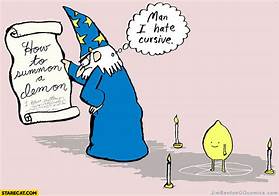
May 24, 2015 | Words in a Row
Fantasy Roleplayers: Show your magic-users some negative love! This table produces dramatic results for critical spellcasting failures in a world where the power of magic can actually harm you – even kill you – if it gets out of your control.
Spellcasting Critical Failures
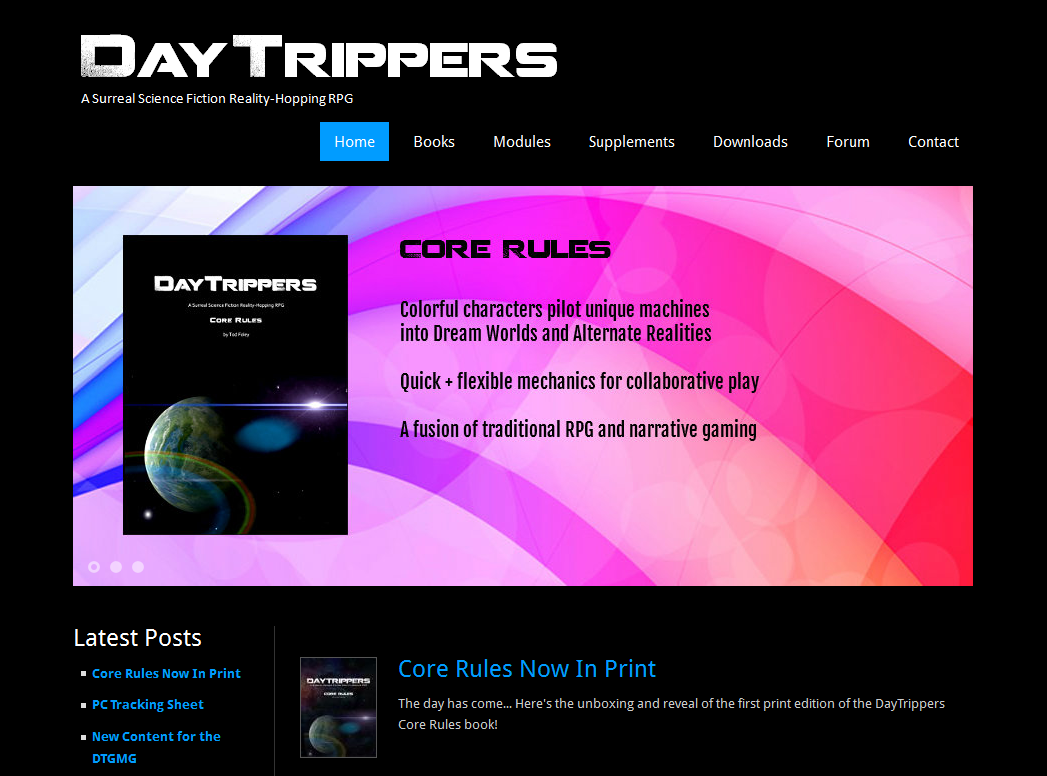
May 16, 2015 | Words in a Row
It’s official – the DayTrippers website now takes up virtual space on the interwebs. Right now it’s basically a listing of all books and supplemental products available in the line, but coming soon – downloads, hacks, updates, maybe even a forum. Check it out, roleplayers!
http://daytrippersrpg.com/

Feb 9, 2015 | Words in a Row
In books and movies, it’s rare to know the entire history of a character before the actual plot begins. In fact, in many books and movies, the only backstory you ever get occurs in flashbacks, after you’re familiar with the character on a more pedestrian level.
The DayTrippers campaign is fine with that. It’s all well and good to expect the Players to create the important aspects of their own characters’ pasts, but it’s entirely another thing to put them on the spot, forcing them to marry themselves to a character concept they haven’t even spent any time playing yet.
A DayTrippers character begins the game in a fairly “generic” state. Sure, each PC is individuated by stats and skill choices, but the real character of the character is something we don’t know yet. In many cases, not even their Player knows them yet, and that’s fine! Specific traits, goals and values can come up at any time in play; no one is forced to create them until it feels appropriate to do so. We’ll get to know this character in their present-day context, the same way we get to know real people, and we’ll learn more about their past as it is revealed to us.
CHARACTER DEVELOPMENT SCENES
In a game with Progressive Character Generation, or PCG, the Players “wear” their characters for a while before determining a lot of details about their history, psychology or values. In the early days of a character’s career it will be easier and more fitting to produce this sort of content, but no one follows a perfectly straight line in life, and everyone is multi-faceted. Learning a whole new angle on someone? Happens all the time.
Here’s how it works in play…
Once per session, each Player may request a Character Development Scene. Some examples:
- Flashback Scene – flashing back to an important lesson or pivotal moment in the character’s life
- Relationship Scene – showing the character in a relationship of some kind, either currently or in the past
- Training Scene – demonstrating some aspect of the character’s training, capabilitiy or personal ethic
- Ah-ha Scene – a sudden realization helps the character to suddenly understand whatever they’re facing
Traditional fiction writers are able to go back and forth while writing, adding backstory and exposition to early chapters as it occurs to them. As GMs we should try to make our Players’ jobs less difficult than that of the professional writer, not more difficult.
The PCG approach gives the Player time to think about their character and see them in action a bit before committing to details that may or may not turn out to be important. Instead, the Player learns about their own character just as we do when we’re reading a book or watching a movie – or writing one. In addition, this approach gives the Player an opportunity in every session to link their character’s backstory to the current plot, as commonly seen in well-written stories and filmed entertainments.
# # #
– excerpt from the “DayTrippers GameMasters Guide”, coming soon from As If Productions.
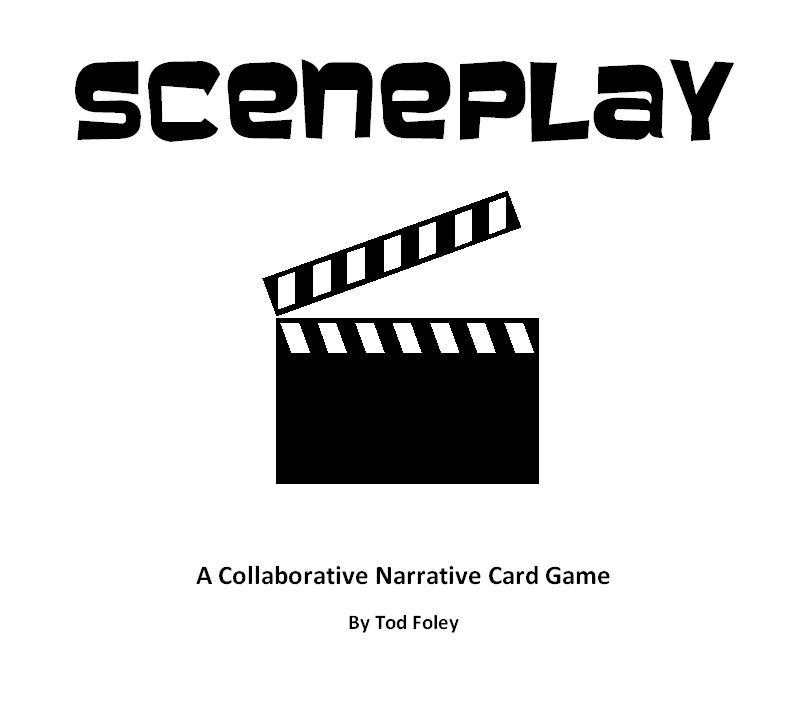
Dec 31, 2014 | Games, Words in a Row, Writing
ScenePlay is a card-based collaborative narrative game that creates movie and tv stories. It’s one of my latest obsessions.
ScenePlay Version 0.13 is a beta test document, which has been released to all members of the As If Collective for edification, playtesting and feedback.
Support As If Productions and assorted AIP projects on Patreon:








